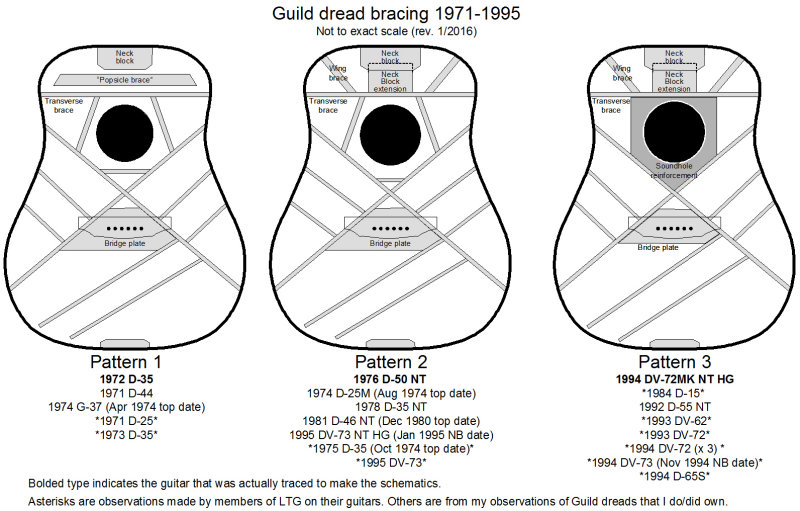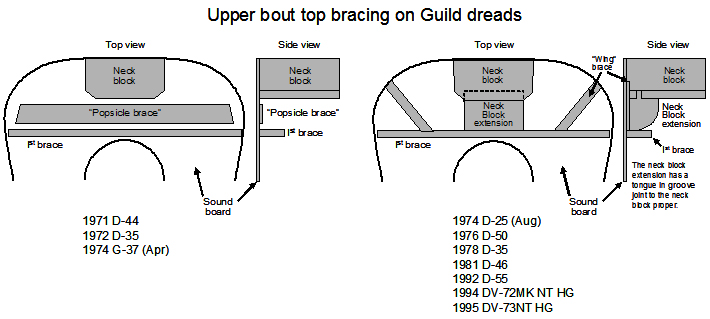So far as you know, are the bracing patterns consistent throughout the life of each model? I.e.: do all Westerly D35s, for instance, follow the same bracing blueprint?
Thanks!
Glenn
No, bracing is NOT necessarily consistent during the life of a model, even at one factory. In fact, it was comparing two Westerly-built D-35s (my '72 and my wife's '78) that started my whole interest. I had noted that the two D-35s had VERY different tone, the '72 being warmer having more bass, the '78 having more jangle, and the '72 was nearly a pound lighter, so I started looking inside and noticed the different neck block bracing (see figures and model #s in OP).
This started a ritual every NGD... get out the mirror and flashlight and look around inside the sound box, usually when the strings were off for the obligatory NGD string change/set up. A good idea anyway, to make sure everything is OK inside (and also looking for date stamps on braces, neck blocks, etc). This is how I discovered the different sound hole bracing, originally in my '92 D-55, then my '94 DV-72. I'd also look at the bridge plate and tail block... so a couple other things to note.
I have seen both maple and rosewood bridge plates...
Maple: '71 D-44 (may not be original), '72 D-35, '92 D-55, '94 DV-72, '95 DV-73
Rosewood: '74 D-25M, '76 D-50, '78 D-35, '81 D-46
I don't remember: '74 G-37
Most of my dreads have one-piece mahogany tail blocks. There are three interesting exceptions:
My '92 D-55 had a two-piece tail block, where a cross-grain piece had been glued along one side of the block (
see pic). This appears to be factory... there was no indication that it was a repair, and the whole block was symmetrically oriented.
Both the DVs have notably smaller tail blocks that appear to be (hard to see) two piece cross-grain laminates (where the seam is in the plane of the block).
I've only looked at guitars I have or do own, so have never looked inside a 12-string or any other body style...





